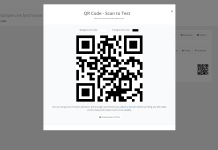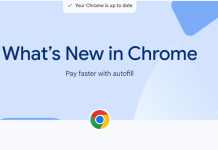What we saw on 09 October 2018 Google event?
Chrome OS replaces Android as Google’s tablet OS
Google is finally ready to get back into tablets, only this time it’s with an operating system that’s up to the task. The Google Pixel Slate it announced today will run Chrome OS, which has matured enough over the past few years to work better on tablets. This won’t be the first Chrome OS tablet, but it will be the first one that can legitimately attempt to compete with the iPad Pro and the Surface Pro.
https://youtu.be/W2swMyTy3oc
The Pixel Slate starts at $599, runs up to $1,699, and asks you to pay extra for a keyboard. It’s more expensive than most tablets because it essentially has the guts of a computer, including an Intel processor.
Pegging where exactly the Pixel Slate fits in the computer market is difficult, because the computer market is rapidly changing. Laptops are becoming tablets and tablets are becoming laptops, and we’re seeing companies try to make nearly everything in between. We’re entering a period of experimentation with big-screened devices and it’s going to mean we’ll see a lot of devices like the Pixel Slate soon. Stuff that doesn’t slot nicely into pre-existing categories, but nevertheless could be a signal of what computers are going to look and act like going forward.
Despite its success on phones, it has been clear for some time that Android can’t really compete on tablets. So Google considers the Pixel Slate a fresh start, the beginning of the next big push for Chrome OS where it will be more than a platform used in schools and by enthusiasts. It signals that Google is finally getting serious about taking on both Windows and the iPad.
The Pixel Slate feels like any normal — albeit big — tablet. And as with any tablet, the focal point is the screen. It’s a 12.3-inch panel surrounded by fairly slim bezels, with an easy-to-remember resolution of 2000 x 3000 pixels. In my short time with it, I found it to be bright, crisp, and have excellent viewing angles.
In an Apple-esque move, Google has chosen to brand the screen technology it’s using, calling it a “Molecular Display.” That branding is less of a mouthful than the term for what lights up the pixels: low-temperature polycrystalline silicon, or LTPS. It’s still an LCD, but has some advantages over traditional TFT LCDs — most notably with battery life. It’s supposedly much more power efficient than other LCDs. Google claims it helps the device achieve “up to ten hours of use” between charges.
As a physical thing, the Pixel Slate looks and feels almost like a giant Pixel phone. Every Google-made tablet before this has either felt cheap (the Nexus tablets) or prototype-y (the Pixel-C). Google’s relatively young hardware division is still developing its hardware design voice, but the Pixel Slate feels of a kind with its phones — even more so than last year’s Pixelbook.
The Gorilla Glass 5 on the front is curved very slightly at the edges to blend down into the rest of the body of the tablet, just as it is on the Pixel 2 XL. It is also flanked on the left and right by two front-facing stereo speakers which get very loud and sound much better than your average laptop.
It’s hard to pin down why, but the Pixel Slate feels much smaller than it ought to given its 12.3-inch screen size. Ergonomically, it’s just nice and easy to hold thanks to the rounded edges and corners. Google says it spent a lot of time making sure that its center of balance is precisely in the middle of the device, making it easier to hold. It weighs 1.6 pounds, which is in the same ballpark as the 12.9-inch iPad Pro — but it’s not as wide or tall.
It comes in just one color, a “midnight blue” anodized aluminum that, unfortunately, picks up fingerprints rather easily. There’s two 8-megapixel cameras, and Google claims the front-facing camera is optimized for both low light and video calling. In fact, the front-facing camera appears to have better specs than the rear camera.
As you look around the edges of the Pixel Slate, you’ll find good news, bad news, and very bad news. The good news first: there are two USB-C ports, one on either side, capable of fast charging and 4K video output. You’ll also find a custom keyboard connector and two microphones. The power button has a fingerprint scanner on it for faster login, too.
The bad news: no SD card slot, though in 2018 that’s such a rarity that it’s increasingly hard to knock it. And then there’s the very bad news: there’s no 3.5mm headphone jack. That’s de-rigueur for phones, but not something that we’re used to on big-screened devices.
Google’s argument is that everybody basically has had to get Bluetooth headphones for their phones anyway, so they may as well use them with the Pixel Slate, too. I asked specifically if the Bluetooth on the Pixel Slate has been improved since the Pixelbook (which is pretty awful), and I’m told that the answer is unequivocally yes. The burden of proof that this is a good move and that the Pixel Slate’s Bluetooth stack is up to the task is very much on Google, and the included headphone dongle doesn’t lessen that burden at all.
The Pixel slate is a tablet, but it’s priced much more like a PC. Instead of the simple tiers you find with an iPad, you’ll have to navigate a bunch of different processor, RAM, and storage options.
The base model is $599, and for that you’ll get an 8th Gen Celeron processor, 4GB of RAM, and a measly 32GB of storage. People who want to use the Pixel Slate for productivity will probably want to spring for the $999 option, which gets you a Core i5, 8GB of RAM, and 128GB of storage.
Wherever you land, you should know that the Pixel Slate does not ship with a keyboard to attach to its keyboard connector. You can use it with whatever Bluetooth keyboard you might already have, opt for a Brydge keyboard custom-made for this device at $149, or spring for Google’s own solution at $199.
In short, this is not an inexpensive tablet. And yet comparing prices for this weird new class of computers is super difficult. A well-specced Pixel Slate with a keyboard will run $1,198, but you can price a 12.9-inch iPad Pro up there if you try, and can easily spend that much on a Surface Pro. But for casual use, a basic $329 iPad can do more than you’d expect.
Thinking about the cost of the Pixel Slate gets even more complicated when you remember that it doesn’t come with a keyboard. Even though Chrome OS is getting better as a tablet operating system, it still works way better as a traditional windowed UI, so I’d consider a keyboard very nearly a must-buy for this device.
At launch, you’ll have three options. First, you should be able to pair whatever Bluetooth keyboard you want with it, but that’s not ideal. You’ll have to deal with charging it and pairing it, and you’ll also lose out on an integrated trackpad.
The second solution is that accessory manufacturer Brydge is making a Bluetooth keyboard specifically designed for the Pixel Slate, much like the ones Brydge sells for the iPad and Surface Pro. It’ll cost $149 and have little hinge attachments on two sides that’ll essentially turn it into a clamshell laptop. It’ll have a trackpad, too.
But by far the most interesting (and most expensive) option will be Google’s own first-party accessory, the $199 Pixel Slate Keyboard.
It attaches magnetically to the bottom of the Pixel Slate with a custom connector, and it has a full-sized set of keys and a trackpad. Google decided to go for circular keycaps, which is a daring design choice that I’m not fully sold on yet.
Google contends that in its user testing it found these keys actually reduce typing errors, but obviously I’d have to try it longer before I could agree. In my short time with it, I didn’t have any problems typing on it — it has more key travel than a MacBook keyboard and is also quieter. I’m just glad that it’s a backlit keyboard — a distressing rarity on Chromebooks and a step above Apple’s Smart Keyboard for the iPad.
The more fascinating part of the keyboard is how it props up the Pixel Slate for typing. There is a flap with a magnet on it that attaches to the rear of the tablet, but you can slide it up and down to position the screen at multiple angles. There are slightly stronger magnets at the top and bottom of that range — you can feel a subtle little “pop” when you hit the end. It also means that the keyboard nicely doubles as a protective case, since it fully covers both sides of the tablet.
The result is something that is every bit as sturdy as the iPad Pro on its Smart Keyboard, yet works at whatever angle you’re comfortable with. It’s also nearly as sturdy as a Surface Pro and its integrated kickstand, with one glaring exception. On a Surface Pro, the keyboard has an extra magnet to attach to the screen at two points, With the Pixel Slate on my lap, I found the whole thing wobbled a lot more than a laptop or a Surface would.
Major tech companies have been casting about for a few years to figure out what comes next after the laptop. Apple has been building the iPad up with more multitasking features while also trying to revitalize the Mac. Microsoft has been working to make Windows more lightweight and tablet-like and may be thinking about new form factors for the future. Now, Google is jumping right into the middle of that fray with its own vision of what a computer should look like.
With Chrome OS gaining in schools over the past four years, it has an opportunity to break out of the single digits of market share. That could mean we are about to see a four-way competition to run your next big-screened device, between Windows, iOS, macOS, and ChromeOS. It’s the sort of tech platform battle we haven’t really seen since the early days of the smartphone.
After spending just a couple hours with the Pixel Slate and talking to the people who developed it, I got a real sense that Google sees those stakes. More importantly, it recognizes that you have to have a top-tier device that is more than just inspiration for other hardware makers, it has to be a thing that real people want to buy. Google made this tablet to show that it’s ready to play at that level.










